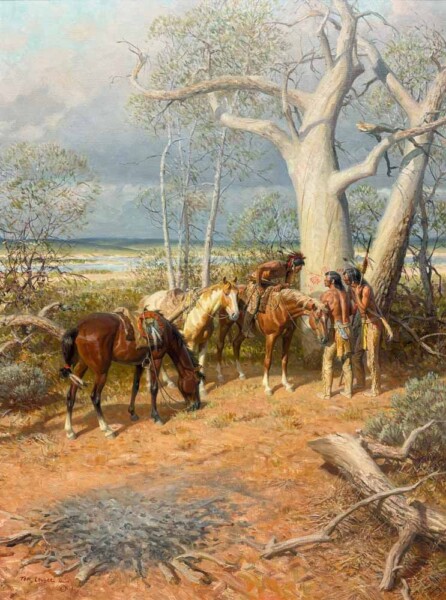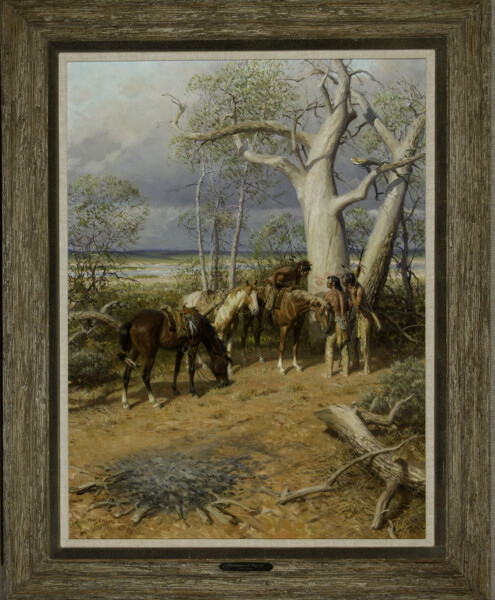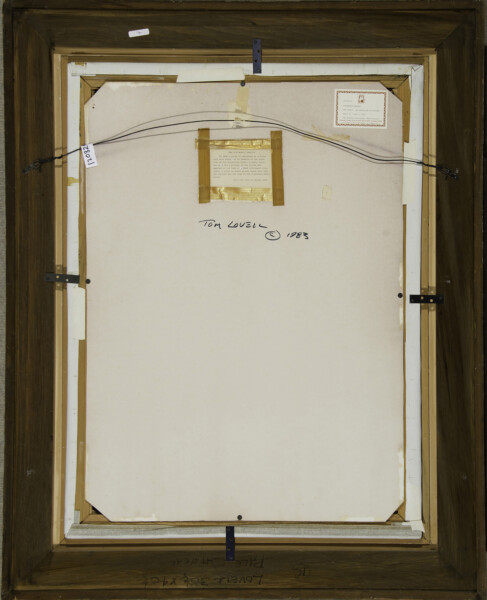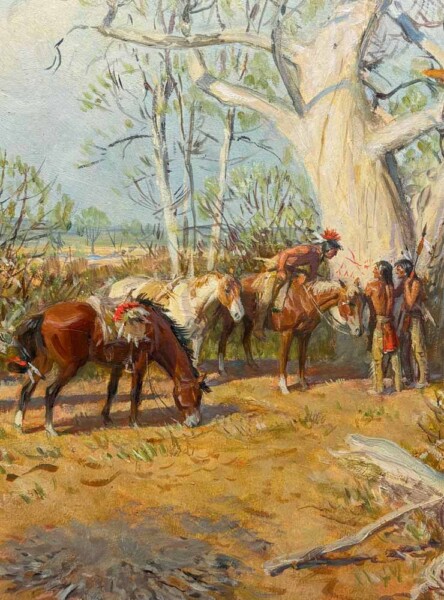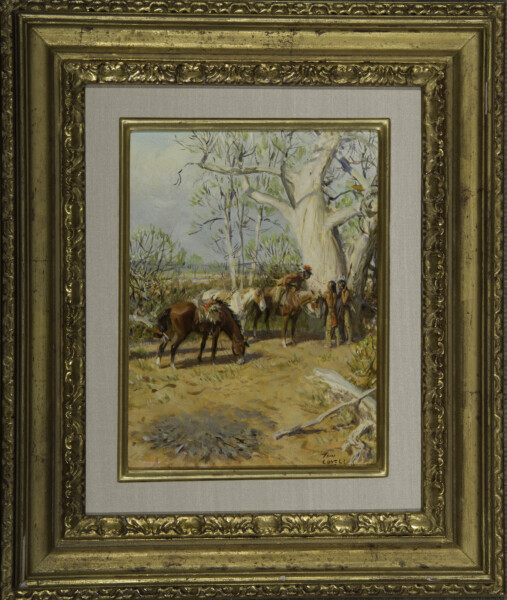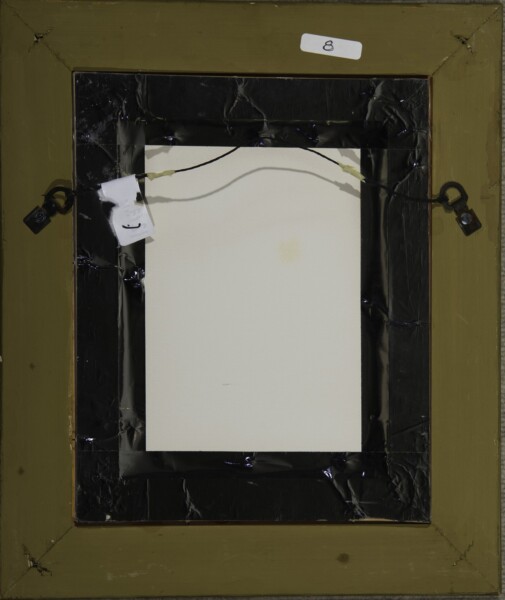Additional Information
Provenance:
Private collection, Texas
Literature:
The Art of Tom Lovell: An Invitation to History, Don Hedgpeth and Walt Reed, William Morrow and Company, New York, NY, 1993: p. 35.
Tom Lovell painted Native Americans as a proud people dedicated to their culture and their ways of life, but he also painted them as a curious people eager to explore and always willing to learn the ways of the visitors who were turning up in their lands. Images with this theme include some Lovell classics: the conquistador trading with the Arapaho in The Iron Shirt, a Native warrior peering down into a bucket well in The Water Hole, and two Lakota riders getting some much-needed heat from the stovepipe of a sod house in The Handwarmer.
Cottonwood Gazette fits squarely into this theme with three Native American riders analyzing carvings in the light bark of a cottonwood tree. “Stolen horses and enemy scalps were measures of greatness among the warriors of the Great Plains. They were the trophies of battle, evidence of individual acts of bravery to be celebrated,” Lovell writes in his book The Art of Tome Lovell: An Invitation to History. “In 1840, a party of Cheyennes on a horse-stealing raid were attacked by Pawnees on the south fork of the Republican River. There were no survivors of the Cheyenne raiding party. The victorious Pawnees held a scalp dance near the battle site and recorded the event in pictographs on the trunk of a dead cottonwood tree. In this scene, a party of Sioux scouts reads about the fight. They will carry the tragic news to their Cheyenne allies. In the foreground are the ashes of the Pawnees’ scalp dance fire.”
Lovell would do a number of war scenes throughout his career that showed the ferocity of Native American fighters, but the bulk of his Indian paintings are quieter and more introspective. This is reflected even earlier in his career when he was an illustrator for men’s adventure magazines and other pulp titles, such as The Shadow and Wild West Weekly. After World War II—in which Lovell and John Clymer (with consecutive dog tag numbers) served in Washington, D.C., as illustrators for Marine publications—pulp magazines took on a harder edge with sensationalized images and exploitive content, but Lovell focused on smaller stories that allowed him to spend time on the narrative and figures. His illustration clients included romance-heavy Redbook, National Geographic and True, where the artist painted numerous Civil War images. When the time came to venture off into his fine art career, Lovell brought all he had learned from illustration to his easel. He also brought his interest in American Indians back into his studio. That interest had never left him. In his book, Lovell tells a story about graduating as the valedictorian of his high school. The speech he gave was titled “The Ill-treatment of the American Indian by the U.S. Government.” Lovell writes, “In retrospect, I wonder how the 300 hapless parents felt, being scolded by a 16-year-old on an otherwise cheerful occasion.” The story reveals a greater truth about Lovell: he was concerned about the portrayal of Native Americans long before he was a painter in the West.
Accompanied by: Limited Edition Signed Book: The Art of Tom Lovell: An Invitation to History; Number 977/1500; by Don Hedgpath and Walt Reed, The Greenwich Workshop Inc. 1993, Illustrated on pg. 35

